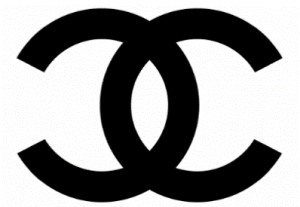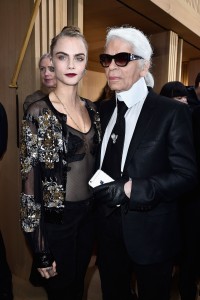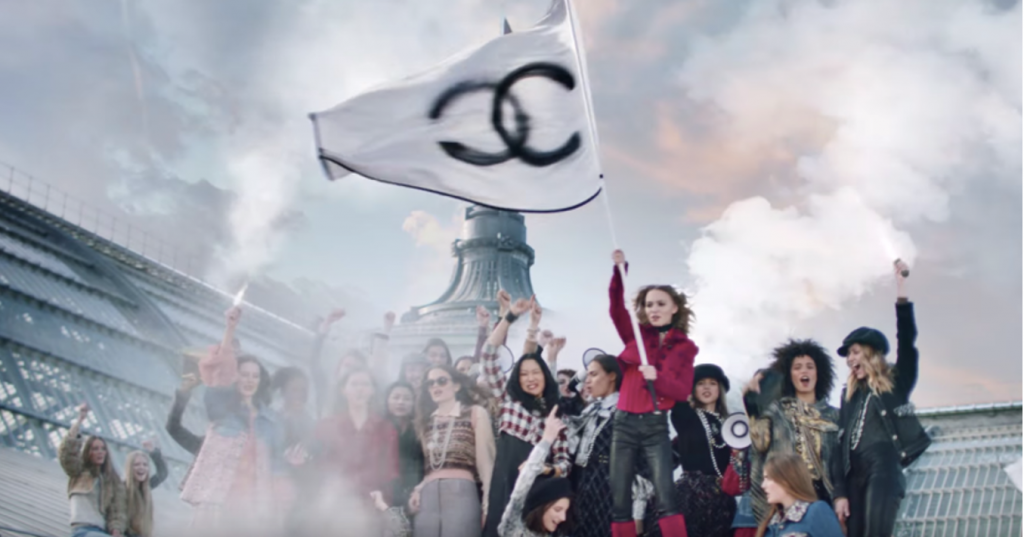CHANEL’s Power of Exclusivity


As the most influential luxury brand among the world (Gilliland, 2018), Chanel impresses customers with its extraordinary products. Founded in 1909 by Gabrielle Bonheur CHANEL, the century-old brand retains its status over time with its uniqueness while renewing and repositioning itself to create a perception of exclusivity and scarcity that keep consumers coming back. To understand the secret of their success, it is important to know how CHANEL has perfectly utilised exclusivity strategies in its company values, design and social media.

CHANEL often shares its unique founding story with customers to emphasise its historic value. CHANEL creates a website called Inside CHANEL (CHANEL, 2013) to embrace its founder, Gabrielle CHANEL, and her achievements in the male-dominated fashion industry. Gabrielle CHANEL is portrayed as a successful iron lady who dared to challenge social norms even though she was once a poor orphan. CHANEL is a good storyteller (Som & Blanckaert, 2015) that often promotes its founder’s legacy in order to connect with customers’ emotionally. This story can be understood universally by women (Som & Blanckaert, 2015) as they can easily relate with CHANEL’s core value and lifestyle. With numerous brands in the market, lifestyle becomes the most important element to make CHANEL stand out from others (Taylor, 2013). Independent and elegant femininity is embraced throughout CHANEL’s marketing campaign. For example, the advertising video of CHANEL N°5 L’EAU (CHANEL, 2016) features the model being the spotlight of the party and waving a flag as a leader on top of everyone. The sales of CHANEL N°5 L’EAU turned out to be a great success despite it is a reinvention of the founder’s fragrance. Thus, it shows CHANEL’s often use of its brand history, cultural artefacts and core values to communicate with customers around the world

Over the years, CHANEL maintains its exclusivity with strong brand identity and consistent design. CHANEL uses the interlocking double C’s as its brand symbol while using pure white camellia and lion, which is Gabrielle’s favourite flower and horoscope, in its product design. Furthermore, CHANEL is renowned for its quality craftsmanship: for example, their iconic pieces of tweed suit, little black dress and the CHANEL No.5 perfume. The brand’s consistency has been largely retained by Karl Lagerfeld, former Creative Director of CHANEL, who once said “my job is not to do what Gabrielle CHANEL did, but what she would have done” (CHANEL, 2019). He often used iconic CHANEL elements in his design to maintain the brand’s personality. He also reinvented tweed suits in his new collections, which was Gabrielle’s revolutionary design in the early 20th century when women can only wear long and heavy dresses according to social norms. Even for jewellery design, Gabrielle’s favourite icons, lion and camellia are the major elements in the recent collections. These are the exclusive symbols of CHANEL that strengthen their exclusivity.

While other fashion brands mainly employ rising celebrities to expose their brand as much as they can (Rocamora, 2013),CHANEL has prioritised its exclusive brand identity over celebrity effects. CHANEL only chooses to cooperate with people that portray a certain type of aspirational lifestyle that match with its brand core value (Gilliland, 2018). Forexample, CHANEL employed Cara Delevingne to be the muse of CHANEL before her rise to stardom, as her quirky and courageous personality matches with the brand’s personality of a brave woman. As the former Creative Director for CHANEL, Lagerfeld once said Delevingne “ …is not a standout beauty… there is no beauty without some strangeness in the proportions” (Fox, 2014). The decision of using Cara Delevingne indicates CHANEL’s adherence to embrace the core values of woman diversity and speciality.
In terms of social media, CHANEL uses it only as a marketing channel rather than a platform for interaction. It provides official information and videos such as fashion shows live streaming or promotional video with narratives and film-like content online (Kim, Lloyd, & Cervellon, 2016). With a total of 40.8 million followers on Twitter and Instagram, CHANEL deliberately follows no one back (Gilliland, 2018) in order to uphold their exclusivity. This strategy may look risky for fashion brand since the recent trend of marketing is focused on the interaction with the audience to arouse engagement. But from the number of followers and likes of CHANEL’s posts on social media, the strategy of avoiding interaction does maintain its image as an exclusive brand.
All these persistence of CHANEL eventually pay off. Not only did CHANEL successfully built a high-end fashion brand image among the customers, it also created value for its customer. By owning a CHANEL item, it is a form of self-expression that expresses admiration towards the brand image that they intend to portray. According to CHANEL’s annual financial report in 2017 (Paton, 2018), the French brand reached nearly US$10 billion in sales, which was at the top of the world’s luxurious brands. CHANEL has also reached a revenue of US$9.6 billion with 11% organic growth and it has zero debt and US$1.6 billion cash flow. The report also revealed that its Asia-Pacific market reached the highest sales growth, with an increase of 16.5% that accounted for 38.9% of total sales in 2017.

‘s
Chanel also emphasises their exclusivity by controlling the number of stores. Burno Pavlovsky, CHANEL’s President of Fashion explained, “we try to bring through the boutiques the best value of the brand.” (CNN Wire Staff, 2012). He believes that the exclusivity is the best way to attract customers, and be able to provides unique, prestigious and tailor-made services to the customers. Chanel insists on keeping its originality from product design to boutique services of the best quality as the core for maintaining exclusivity.
CHANEL has impressed the public and has gained great support across the world with its uniqueness and exclusivity. By evoking their exclusivity with well-planned marketing campaigns that successfully promote their luxurious products and ideal lifestyle, CHANEL eventually created a well-known brand identity.
Reference
CHANEL. (2013). Inside Chanel. Retrieved from CHANEL: http://inside.chanel.com/en/
CHANEL (2016). N°5 L’EAU [Motion Picture].
CHANEL. (2019, February). Thank You Karl Lagerfeld. Retrieved from CHANEL: https://www.chanel.com/en_HK/fashion/news/2019/02/thank-you-karl-lagerfeld.html
CNN Wire Staff. (2012, November 8). Chanel’s exclusivity keeps it a cut above. Retrieved from CNN: https://edition.cnn.com/2012/11/08/business/chanel-targets-china/index.html
Fox, I. (2014, March 25). Karl Lagerfeld: ‘I always think I’m lazy, maybe I could do better’. Retrieved from https://www.theguardian.com/fashion/2014/mar/25/karl-lagerfeld-genius-modern-fashion-chanel
Gilliland, N. (2018, April 11). Why Chanel is the most influential luxury brand on social. Retrieved from Econsultancy: https://econsultancy.com/why-chanel-is-the-most-influential-luxury-brand-on-social/
Kim, J.-E., Lloyd, S., & Cervellon, M.-C. (2016, January). Narrative-transportation storylines in luxury brand advertising: Motivating consumer engagement. Journal of Business Research, 69(1), 304-313.
Paton, E. (2018, June 21). Chanel Publishes Annual Results for First Time in 108 Years. Retrieved from The New York Times: https://www.nytimes.com/2018/06/21/business/chanel-earnings-luxury-annual-report.html
Rocamora, A. (2013). New Fashion Times: Fashion and Digital Media. In S. Black, The Handbook of Fashion Studies (pp. 61-77). London: Bloomsbury Academic.
Som, A., & Blanckaert, C. (2015). The Road to Luxury: The evolution, Markets, and Strategies of Luxury Brand Management. Singapore: John Wiley & Sons Inc.
Taylor, P. (2013). How to Product a Fashion Show From A To Z. New Jersey: Pearson Education, Inc.

